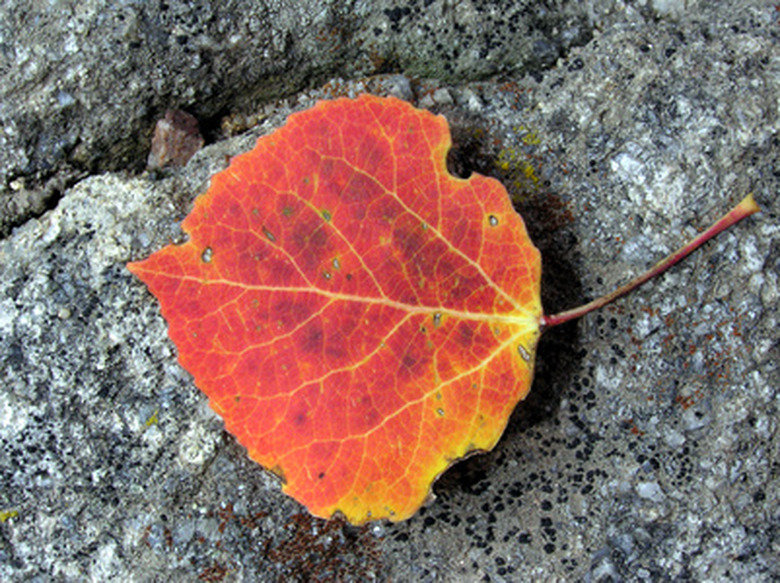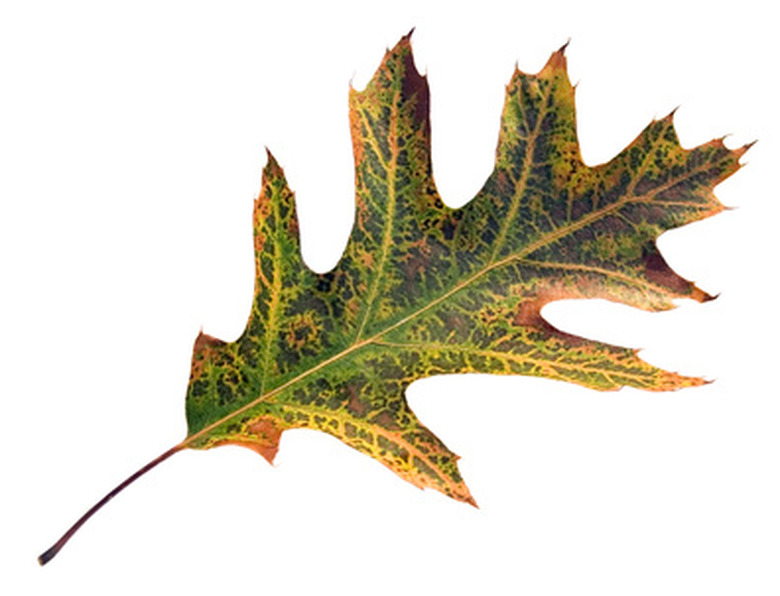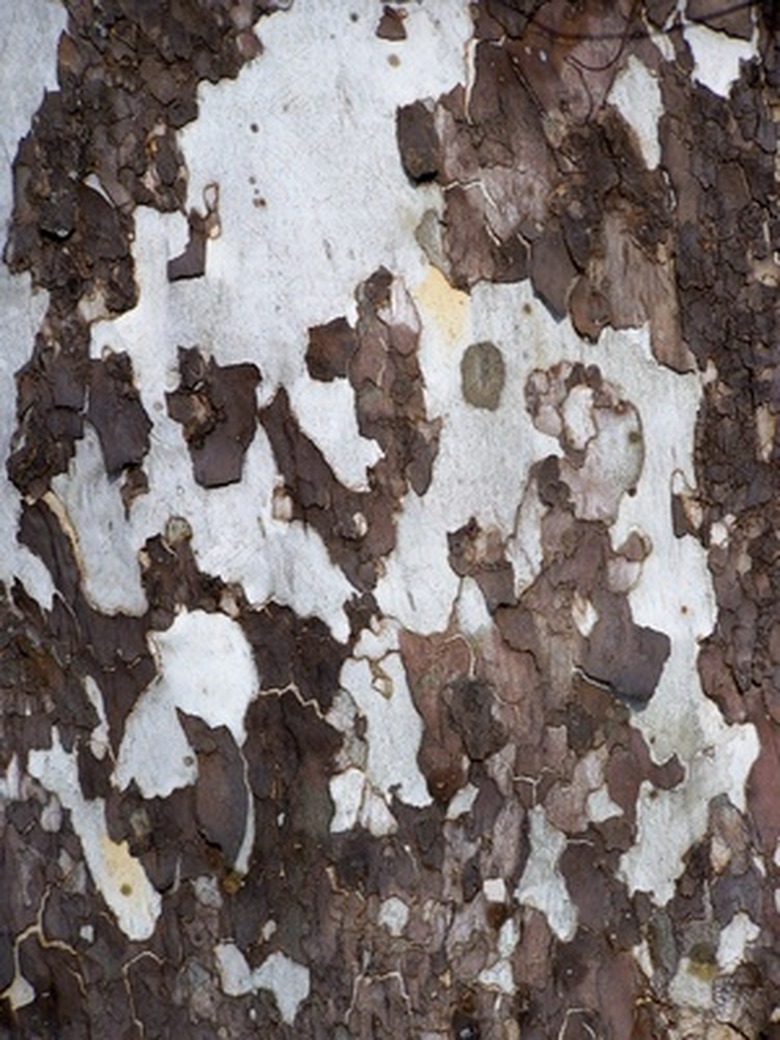New Jersey Tree Identification
New Jersey is one of the mid-Atlantic states, sharing boundaries with New York, Pennsylvania and Delaware. The nature of the tree population varies according to location and elevation. Parts of southwestern New Jersey and the southern coastal portion of the state are in USDA Zone 7a. Winter low temperatures are between 0 and 5 degrees Fahrenheit. The majority of the state's inland areas are in USDA Zone 6b, with winter lows between -5 and 0 degrees Fahrenheit. Areas in northwestern New Jersey are in USDA Zone 6a, with winter lows between -10 and -5 degrees Fahrenheit.
Oaks
New Jersey is home to eight native oak (Quercus) species, including white, scarlet, southern red, bear, black jack, water, willow and chestnut oaks. With the exceptions of the willow and chestnut oaks, all have the familiar elongated, lobed leaves. Sometimes the lobes may end in pronounced points; sometimes the lobe endings are more rounded. All native New Jersey oaks are also easily identifiable because of the acorns, which are oval shaped with somewhat bowl-shaped caps.
- New Jersey is one of the mid-Atlantic states, sharing boundaries with New York, Pennsylvania and Delaware.
- The majority of the state's inland areas are in USDA Zone 6b, with winter lows between -5 and 0 degrees Fahrenheit.
Conifers
Native New Jersey conifer species include pines and false cypress. The former group includes short leaf, pitch, pond and Virginia pines. These pines are distinguished by long, dark-green needles and sometimes prickly cones that are distinctly woody, especially at the base. The false cypress is part of the genus Chamaecyparis and is commonly known as Atlantic white cedar.The trees feature sprays of flattened, slender evergreen foliage, a columnar configuration and tiny cones.
Flowering Stand-Outs
Several showy, flowering species are native to the Garden State. Cornus florida, the common flowering dogwood, features spring "flowers" composed of four large white or pink bracts. Witch Hazel is one of the first plants to bloom in the spring, producing fragrant, spider-like yellow flowers. Mountain laurel also flowers in spring on the edges of wooded areas, producing cupped blossoms in shades of white, pink and rose. Tall and straight, the tulip poplar has broad, lobed leaves and tulip-like flowers that are green and yellow marked with vivid orange. Sweet bay magnolia features white, lemon-scented blooms sporadically from May and June through September.
- Native New Jersey conifer species include pines and false cypress.
- The trees feature sprays of flattened, slender evergreen foliage, a columnar configuration and tiny cones.
Nut Trees
Nut trees native to New Jersey include walnut, hickory and chestnut. Black walnut trees are notable for their pinnate or feather-like leaf configurations and edible nuts encased in rounded, aromatic, lime-green hulls. Native hickories include pignut, sand and mockernut varieties. The hickories feature compound, pinnate leaves that turn a brilliant yellow-gold in the fall. American chestnut, with its elongated, toothed leaves and edible fruits in prickly casings, was decimated by disease in the early 20th century. The trees are a rarity now.
Other Common New Jersey Natives
Other common New Jersey trees include the sycamore, with its maple-like leaves and characteristic mottled, exfoliating bark. Red maple features characteristic palmate leaves that often become brilliant red in the fall. Sweetgum is another tall, straight tree with maple-like leaves and round, prickly fruit. The beautiful American beech has a short trunk, smooth gray bark and a large rounded crown. Quaking Aspen is characterized by fast growth and rounded leaves that are silvery on the bottom and flutter in the wind.
- Nut trees native to New Jersey include walnut, hickory and chestnut.
- Other common New Jersey trees include the sycamore, with its maple-like leaves and characteristic mottled, exfoliating bark.
References
- "Manual of Woody Landscape Plants"; Michael A. Dirr; 1998
- Plant Maps: New Jersey


